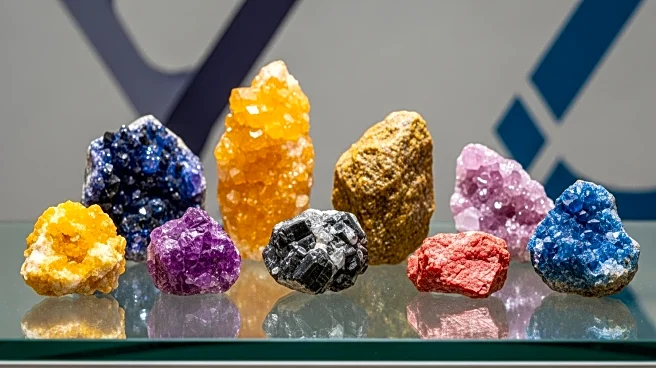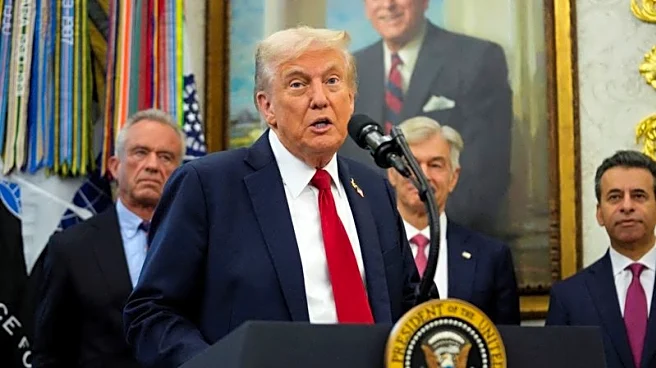What's Happening?
USA Rare Earth (USAR) has seen its stock more than double in 2025, reaching all-time highs due to its strategic role in the U.S. rare earth supply chain. The company's recent acquisition of Less Common Metals (LCM) in the UK is a significant step in its mine-to-magnet strategy, allowing it to convert rare earth oxides into metals and alloys for magnet production. This acquisition, along with the company's close communication with the White House, has fueled speculation of potential U.S. government investment, similar to federal stakes in other critical mineral companies earlier this year.
Why It's Important?
The surge in USAR's stock highlights the growing importance of rare earth elements in the U.S. economy, particularly for defense and technology sectors. The company's efforts to establish a domestic supply chain for these critical materials align with national security interests, reducing reliance on Chinese imports. The potential for government investment underscores the strategic value of USAR's operations, which could lead to increased funding and support for its projects. This development is crucial for stakeholders in the rare earth industry and could influence future U.S. policy on critical minerals.
What's Next?
USAR plans to integrate LCM's technology into its U.S. operations, with a magnet manufacturing plant in Oklahoma expected to begin production by early 2026. The company may seek additional capital or government support to fund its ambitious projects. Investors and industry observers will be watching for any official announcements of government partnerships or funding, which could further boost USAR's stock and solidify its position in the rare earth supply chain.
Beyond the Headlines
The acquisition of LCM not only enhances USAR's production capabilities but also strengthens its relationships with European and U.S. magnet consumers. This move positions USAR as a key player in the global rare earth market, potentially expanding its influence beyond the U.S. The company's focus on vertical integration and domestic production could serve as a model for other industries seeking to reduce foreign dependency.











